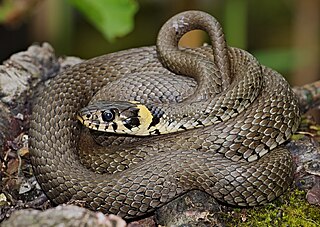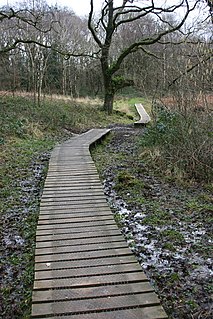Related Research Articles

The grass snake, sometimes called the ringed snake or water snake, is a Eurasian non-venomous colubrid snake. It is often found near water and feeds almost exclusively on amphibians. The barred grass snake, Natrix helvetica, was split off as a separate species in 2017.

Natrix is a genus of Old World snakes found across Eurasia in the subfamily Natricinae of the family Colubridae.

Nerodia rhombifer, commonly known as the diamondback water snake, is a species of nonvenomous natricine colubrid endemic to the central United States and northern Mexico. There are three recognized subspecies of N. rhombifer, including the nominotypical subspecies.

Langford Heathfield is a 95.4 hectare biological Site of Special Scientific Interest at Langford Budville, 3 km (1.9 mi) north west of Wellington in Somerset, notified in 1966.

Autohaemorrhaging, or reflex bleeding, is the action of animals deliberately ejecting blood from their bodies. Autohaemorrhaging has been observed as occurring in two variations. In the first form, blood is squirted toward a predator. The blood of these animals usually contains toxic compounds, making the behaviour an effective chemical defence mechanism. In the second form, blood is not squirted, but is slowly emitted from the animal's body. This form appears to serve a deterrent effect, and is used by animals whose blood does not seem to be toxic. Most animals that autohaemorrhage are insects, but some reptiles also display this behaviour.
References
- ↑ Latvijas PSR dzīvnieku noteicējs. II daļa. Mugurkaulnieki. Rīga, Latvijas Valsts izdevniecība, 1956, 72.—76. lpp.